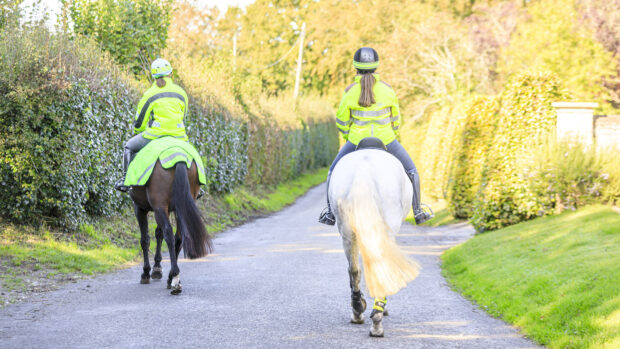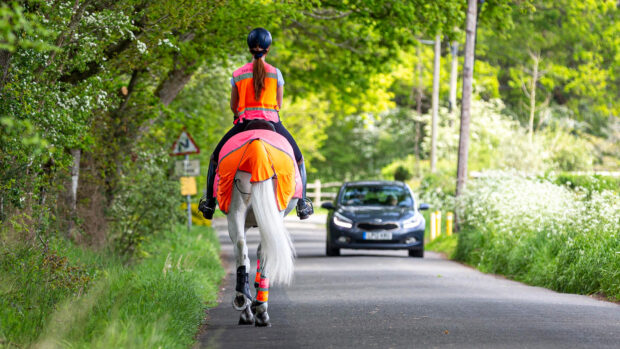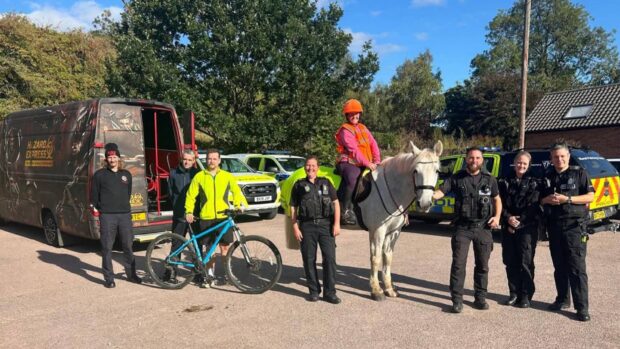Drivers are playing “Russian roulette” with animals’ lives in the New Forest, as calls are made to install average-speed cameras.
Thousands of people have signed petitions asking for the cameras to be installed at Roger Penny Way, following a number of fatal collisions involving multiple animals. The first petition, created by Gilly Jones of the New Forest Roads Awareness group, asked the New Forest District Council (NFDC) to support the installation of cameras. The petition was open to New Forest residents between January and September and received 3,557 signatures.
A second petition, open to the general public, was created by commoner Sarah Weston after her four-year-old gelding Juma was killed on Roger Penny Way in August. The petition, which is still open and can be signed here, received more than 50,000 signatures in 10 days and has been submitted to the authorities. It is hoped a feasibility study could be launched to show the need for the cameras, but this will need funding.
From 1 January to date, nine ponies and three donkeys have been killed in the New Forest; six more ponies and three donkeys have been injured and had to be put down.
“Since Juma died, there have been several more accidents and time is of the essence. Drivers are playing Russian roulette with our ponies,” Ms Weston told H&H.
“There is a lot of talk but not enough action. This is a national park and a national issue. We need the feasibility study to happen quickly and efficiently, and we need to examine the results carefully so we know what we’re up against. If the study finds the cameras will work sufficiently, then we need them on these dangerous roads.”
New Forest head agister Jonathan Gerrelli told H&H the topic of average-speed cameras has been raised by the verderers and commoners several times over the last five years. He said meetings were held with the police, but at the time infrastructure and technology were issues, such as the signal required for the cameras to operate, and the costs involved in installing and maintaining the cameras.
“We felt average-speed cameras would be a way of helping with the animal accident issue, but at the time it was not as simple as we first hoped or imagined it might be. There are a lot of different bodies and authorities that need to come together, but there is quite a push at the moment to go that next step. Technology has improved and installing cameras is something the different Forest bodies are behind,” he said, adding that the verderers have agreed to help fund the feasibility study.
A spokesman for the NFDC told H&H the council would support an initiative that reduces speed on Roger Penny Way, but added that the district council does not have the authority to administer enforcement activities on the public highway. The spokesman confirmed the council will debate Ms Jones’s petition, and will “undoubtedly feature” Ms Weston’s petition within the debate.
Councillor Russell Oppenheimer, Hampshire County Council’s executive member for highways operations, told H&H the county council is aware of Ms Weston’s petition, but that average-speed cameras would require the full support of Hampshire Constabulary, which is responsible for speed enforcement. He added that any scheme would need to be operated by the force on a full recovery cost basis.
“Should they support this, there would need to be further discussions between various agencies, and a specialist feasibility study undertaken before any final decision can be made,” he said.
Hampshire Constabulary confirmed to H&H the force has been engaged in talks with parties including the NFDC and the verderers in the past two years about average-speed cameras, but said there is currently “no policing justification” or funding opportunities to support this.
“There are a number of local partners involved in making such a decision, including the NFDC, Hampshire Constabulary and the police and crime commissioner – in consultation with the New Forest verderers. It is not the sole responsibility of Hampshire Constabulary, but a partnership approach,” said the police spokesman.
“Previously, we have worked in partnership with organisations including the National Park Authority, Forest Rangers and Commoners Defence Association to raise awareness of animals killed by collisions in the New Forest. There are a number of community speed watch groups, which operate using equipment supplied by the NFDC, and are focused on education and a visible presence in the area, allowing for the gathering of evidence of offending which may lead to consideration of enforcement action.”
Hampshire police and crime commissioner Donna Jones told H&H she had spoken with the Hampshire Constabulary rural crime team and Now Forest policing team in relation to concerns around speeding and animal road deaths.
“Any solution will need the cooperation of the highways authority and the NFDC, so it is important that all agencies work together to explore all feasible options in order to determine the right way forward,” she said.
“I am in contact with the official verderer with regards to next steps.”
You might also be interested in:

Picture of mare mourning dead foal after hit and run released to increase driver awareness

Mare filmed jumping over car door shows dangerous consequences of feeding horses
“I’m worried this problem is going to erupt when lockdown is lifted if we don’t get the message across”

Subscribe to Horse & Hound magazine today – and enjoy unlimited website access all year round
Horse & Hound magazine, out every Thursday, is packed with all the latest news and reports, as well as interviews, specials, nostalgia, vet and training advice. Find how you can enjoy the magazine delivered to your door every week, plus options to upgrade your subscription to access our online service that brings you breaking news and reports as well as other benefits.




